Market Hall by Robbrecht en Daem and Marie-José Van Hee
Light filters through hundreds of rectangular slits into this towering market hall in Ghent, Belgium, which is is one of the five finalists for the Mies van der Rohe Award 2013 (photos by Hufton + Crow).
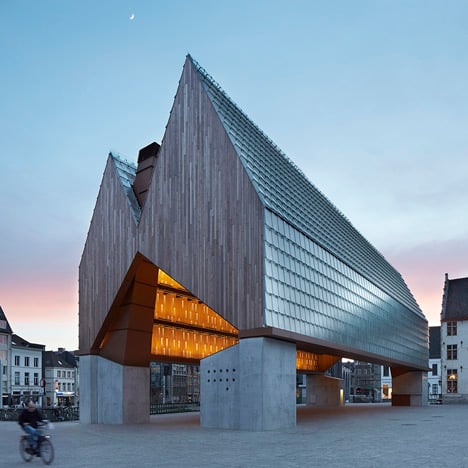
Designed by Belgian studios Robbrecht en Daem and Marie-José Van Hee, the dual-gabled timber and concrete structure references the gabled forms of a nearby town hall to provide a grand shelter between the gothic structures of a church and belfry in the centre of the city.
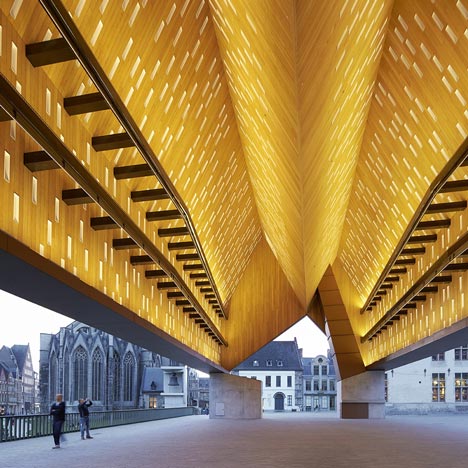
The site had formally served as a car park, but the architects have paved over the ground surfaces to create a new public square.
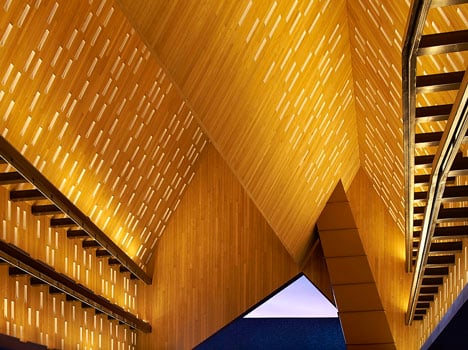
The 40-metre-long Market Hall stretches across the square and is open on all sides, allowing pedestrians to enter from any direction.
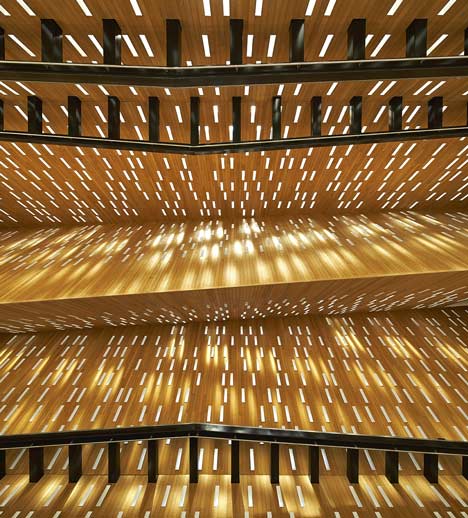
Four chunky concrete feet support the asymmetric roof at each of its corners.
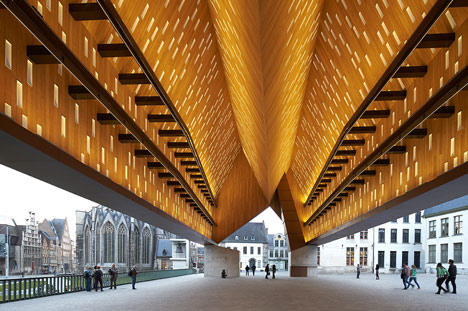
Glass squares clad the exterior surfaces of the building to protect the timber from the elements.
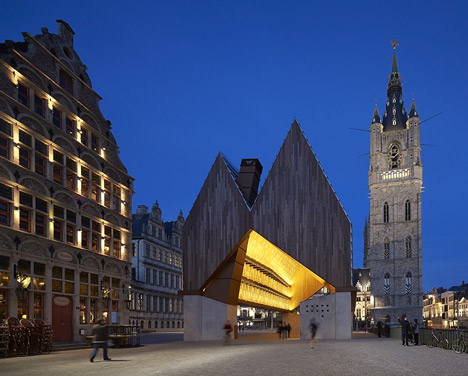
A fireplace is positioned inside one of the concrete feet for use during an annual festival and lets smoke out through a chimney in the roof.
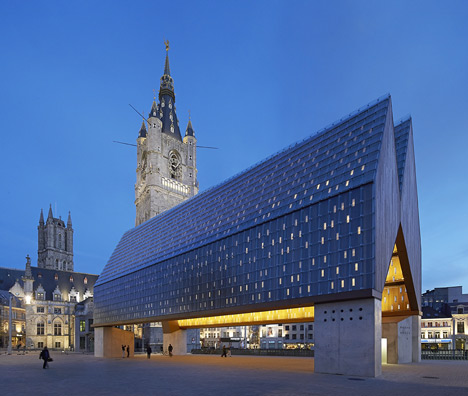
The building was named on the shortlist for the European Union Prize for Contemporary Architecture in January, alongside a nursing home in Portugal, a concert hall in Iceland, a timber canopy in Spain and a city park in Denmark.
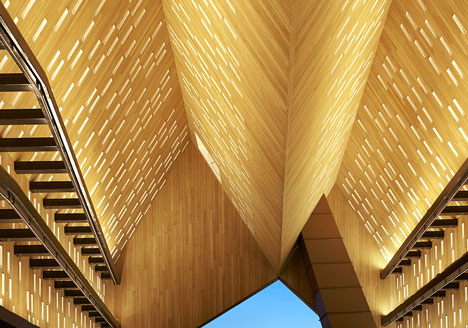
Other market buildings completed in recent years include a concrete fish market in Istanbul and a farmers' market shelter in Virginia. See more markets on Dezeen.
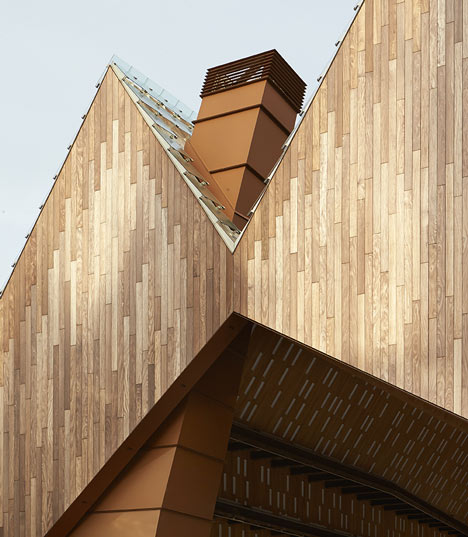
See more photography by Hufton + Crow on Dezeen or on the photographers' website.
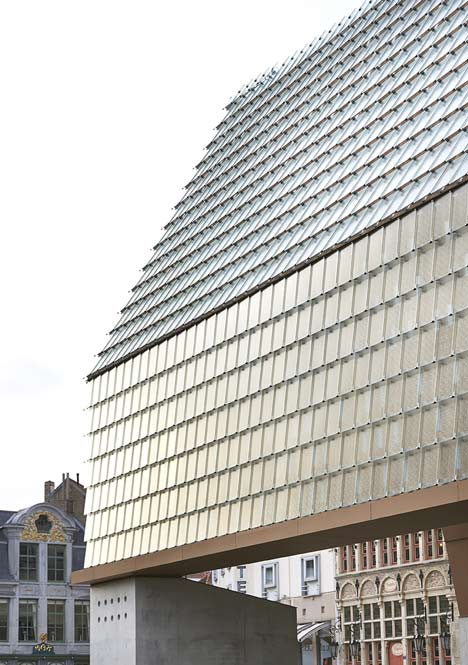
Here's a project description from Robbrecht en Daem Architecten:
Market Hall & Central Squares Ghent, 1996-2012
Following two demolition campaigns for a world exhibition in 1913 and an administrative centre never built in the 60s, Ghent's historic heart degenerated for decades into a desolate parking lot in between a suite of three adjoining Gothic towers.
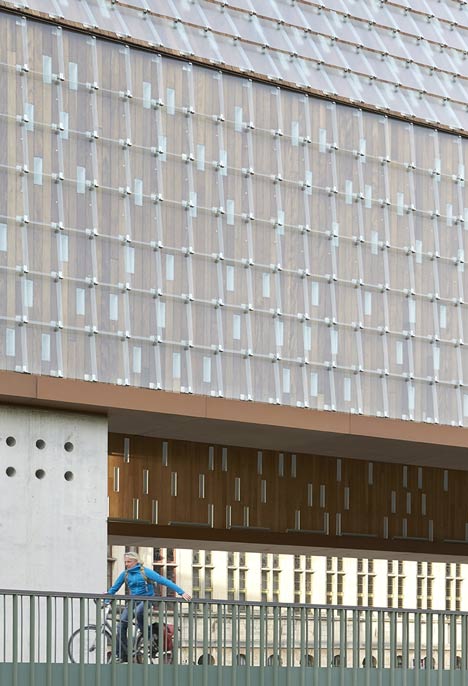
In two consecutive competitions between 1996 and 2005, Robbrecht en Daem architecten and Marie-José Van Hee architects proposed their own programme, countering the initial competition requirement.
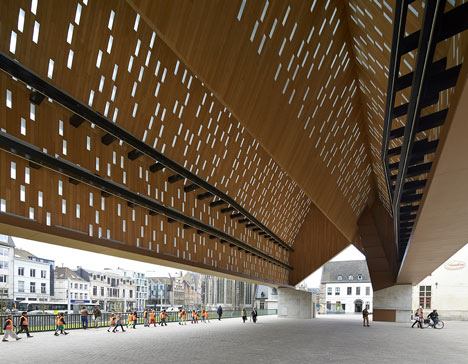
Rather than just providing an open space for events, they sought, by meticulously positioning a market hall, to rectify this deficiency and reinstate the presence of old urban areas that had become unrecognisable.
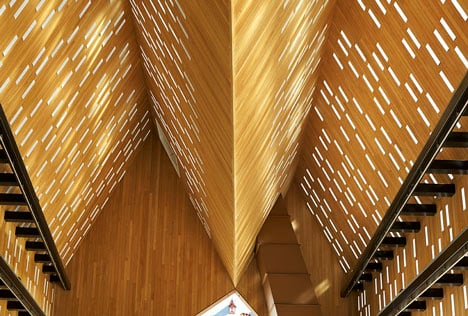
The building positions itself between Poeljemarkt, Goudenleeuwplein, and a new lower 'green' connecting to the 'brasserie', bicycle park and public toilets below the hall. And although the building clearly occupies a position on the 24,000m2 site, it fits in well.
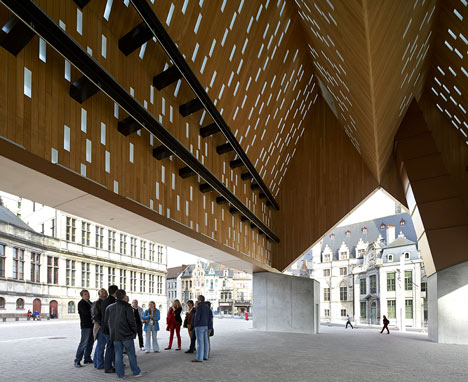
Compared to St. Nicholas Church, Belfry and Cathedral, it assumes the heights of a lower group of buildings such as the adjacent town hall, from which it derives, mathematically, its profile.
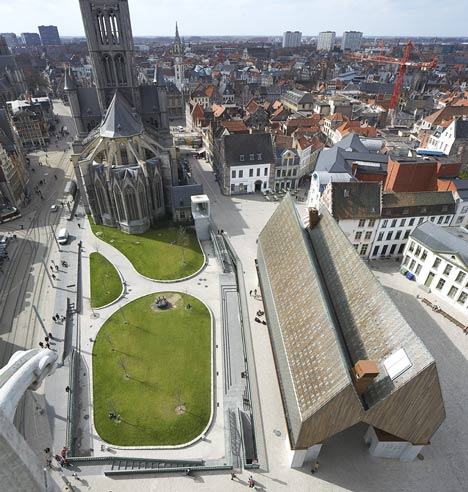
As an urban interior, the inside embraces the passer-by with a dual modulated wooden ceiling, whose small windows scatter light inwards.
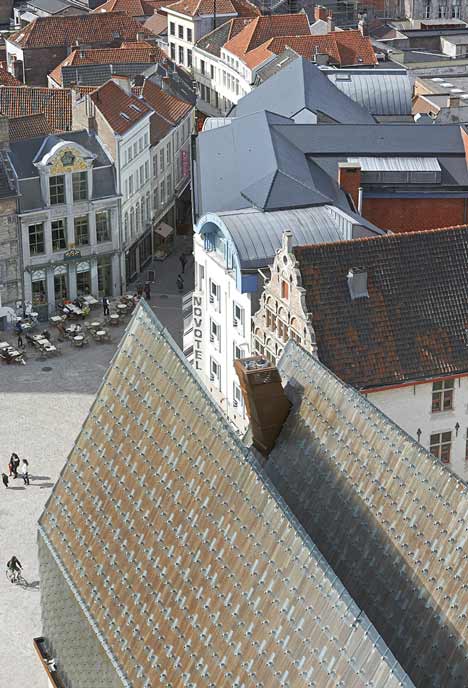
The exterior, the entire building in fact, seems to assume a respectful role relative to the nobler historic stone buildings, by using a wooden, almost humble, finish.
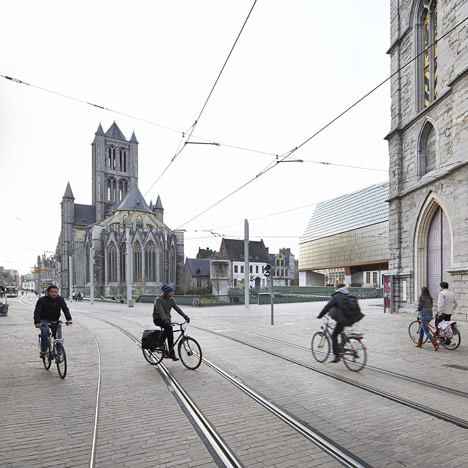
A glass envelope protects the wood and provides a soft shine, with the sky reflected, integrated. Large buffer basins to absorb rainwater, principles of low energy consumption for the brasserie, use of truly natural materials, the contribution of public transport and a clear vision about giving new value to the historic centre with its old spatial structures, are just parts that broadly flesh out 'sustainability' for the future. The centre of Ghent will again become a social spot for people.